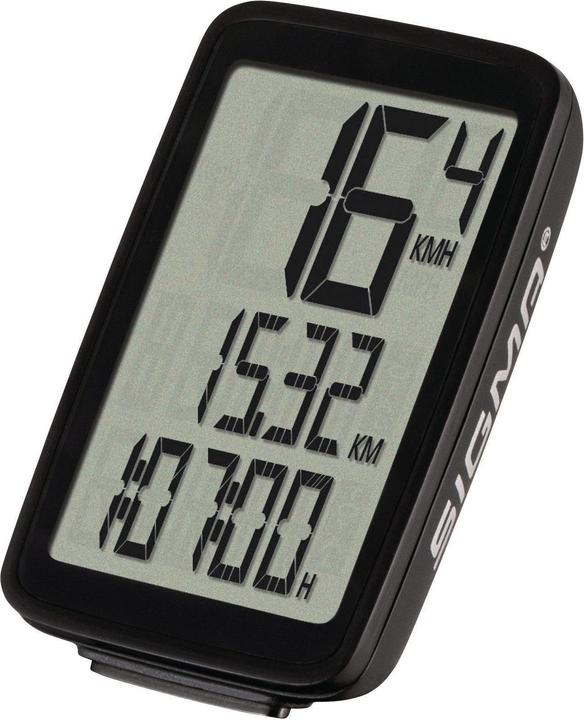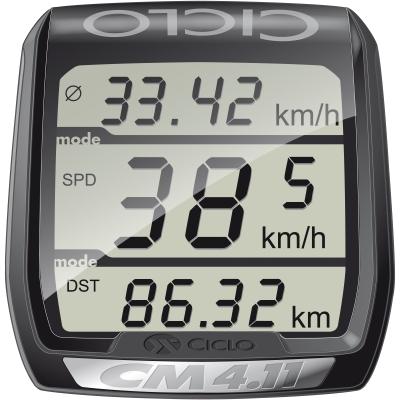

Speedometer, sat nav, training centre: Velocomputer for beginners and professionals
The simplest models are available for small change, high-end devices are really expensive and offer many features. They navigate, interact and collect plenty of training data. An overview of what you can put on your handlebars.
They are available with a routing function and a detailed map display, as you know it from your car. They are available with a routing function without a map, but with quick-to-read instructions on the display. There are - despite GPS - without inbuilt signposts. And there is still the classic speedometer, which measures speed and distance via a sensor mounted on the bike. Velocomputers fulfil very different requirements.
Classic bike computers
Almost every gadget now has a built-in GPS sensor that records your current position, altitude and speed. This raises the question of why there are still classic speedometers that require a magnetic sensor to be mounted on the bike. Regardless of whether the data is transmitted via a cable or wirelessly - it is an additional part on your bike. But it still has its raison d'être. Not just for nostalgics.
Cabled:

Wireless:
Advantages:
- A magnetic sensor measures precisely and reliably, even in tunnels or valleys where GPS reception is not possible.- The battery lasts for many months. You don't have to constantly charge your device, but perhaps replace the battery once a year.
- Clear display of (average) speed, distance and (travelled) time.
- Compact and affordable, easy to use.
Disadvantages:
- You only have data that the magnetic sensor can measure. No recording of geocoordinates possible. So no navigation, no recording of the routes travelled.
- Since you need the sensor, you can't easily switch to another bike.
GPS computer without routing function
As long as you don't need a full-blown sat nav with a large display and touchscreen, it's quite possible that you'll be completely satisfied with such a bike computer. With GPS, Bluetooth and the ANT+ wireless standard, the expansion options are great and the housing still remains small. You can analyse your data at your leisure on your PC, keep an eye on the most important factors on the road and keep your hands on the handlebars. Perfect when you're out and about on your road bike.
Advantages:
- Expandable with sensors.- Many possibilities, yet very compact
- Still relatively inexpensive.
Disadvantages:
- No touchscreen - which can also be an advantage depending on personal preference
- Small device, small battery. Not too long runtime. The Sigma Rox 11.0 linked above, for example, has a maximum battery life of 13 hours.
GPS computer with routing function
These bike computers are also sat navs. They either work with maps or simply offer a routing function for previously loaded routes. The Garmin Edge 130, for example, is very compact and does not require a touchscreen. It can navigate you along a track, take you back to the starting point or show you where your destination is using a directional arrow. You can plan your routes on your computer or via the Connect IQ app and load them onto the device. Models without map material cannot calculate them themselves.
Other GPS computers work with colour maps and can calculate routes in the same way as your mobile or car. If you have the appropriate maps installed, you can display roads, cycle paths and trails or load and follow routes. Some GPS computers are almost the size of a smartphone and are packed with interfaces, barometric altimeters and maps. There are also features such as training plans, accident detection or rider-to-rider messages. Our colleague Daniel Feucht has tested the top model Garmin Edge 1030.
Advantages:
- You have a "real" sat nav that simultaneously collects performance data, offers training plans and live comparisons
- Easy operation via a large touchscreen that also works with bike gloves on your fingers
- You are flexible and can use your sat nav on different bikes as the device does not require any additional sensors.
Disadvantages:
- Size, weight and price increase with the possibilities.- The battery life is limited, after 10 to 20 hours it's over.
- In order to be able to use the wide range of functions and customise the device to your individual needs, you need to familiarise yourself with it intensively.
Now you have the choice. Here you can find an overview of all Velocomputers.
Simple writer and dad of two who likes to be on the move, wading through everyday family life. Juggling several balls, I'll occasionally drop one. It could be a ball, or a remark. Or both.
Practical solutions for everyday problems with technology, household hacks and much more.
Show all






